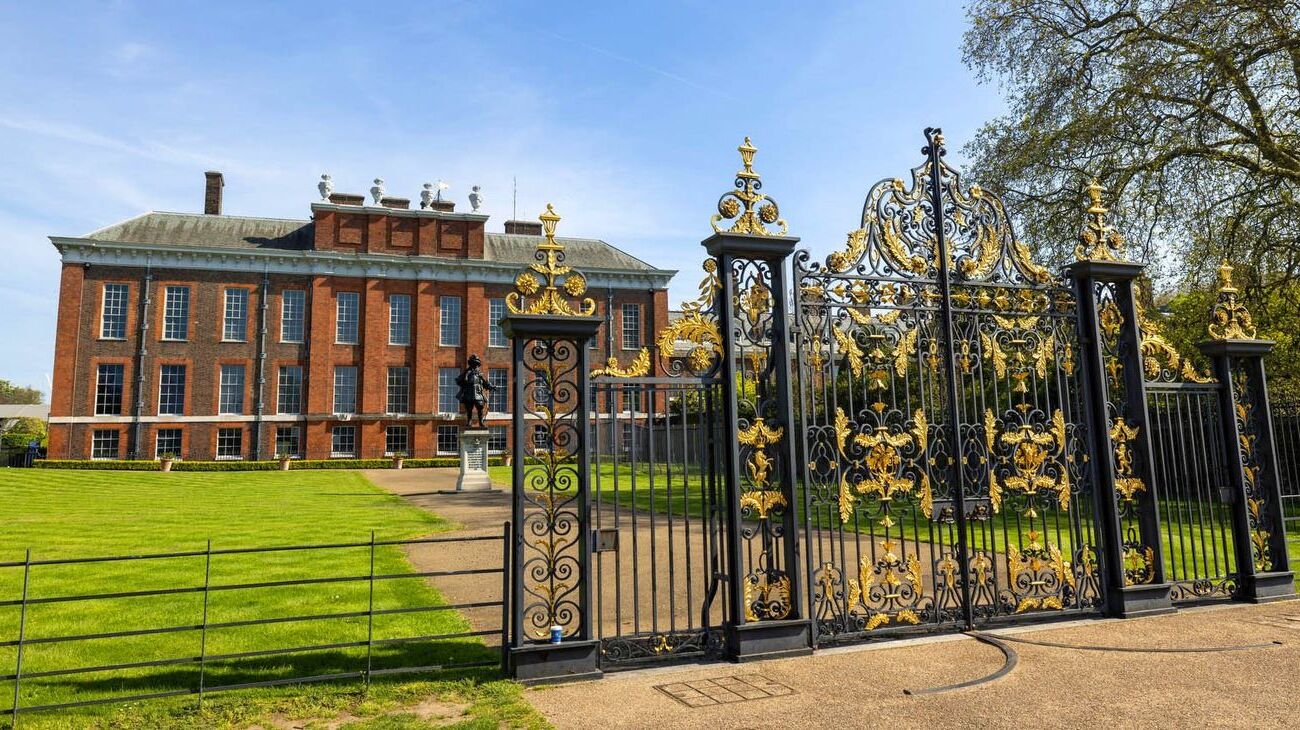
Ever wondered what makes Kensington Palace so special? This iconic royal residence in London has a history spanning over three centuries. Originally a modest Jacobean mansion, it transformed into a grand palace under King William III and Queen Mary II. Home to notable royals like Queen Victoria and Princess Diana, the palace is steeped in stories of grandeur, scandal, and even ghostly encounters. Today, it houses the Prince and Princess of Wales, William and Kate, among others. From its stunning gardens to its haunted halls, Kensington Palace offers a unique glimpse into the lives of British royalty.
Kensington Palace: A Royal Residence with a Rich History
Kensington Palace, located in the heart of London, has been a significant royal residence for over three centuries. Its history, architecture, and notable residents make it a fascinating place. Let's explore some intriguing facts about this iconic palace.
-
Origins and Early History
Kensington Palace began as Nottingham House, a Jacobean mansion built in 1605 for Sir George Villiers, 1st Duke of Buckingham. In 1689, King William III and Queen Mary II transformed it into a royal residence. -
Expansion and Renovation
King William III expanded the palace significantly. The King's Gallery, built in 1695, showcased his love for grandeur and military strategy. Originally hung with green velvet, it served as a meeting place for the King and his spies.
Notable Residents of Kensington Palace
Kensington Palace has housed many significant figures in British history. Let's look at some of its most notable residents.
-
Queen Victoria
Queen Victoria was born and raised at Kensington Palace. Her early life was marked by the strict Kensington System, imposed by her mother and Sir John Conroy, which led to an unhappy childhood. -
The Duke of Sussex
Prince Augustus Frederick, Duke of Sussex, lived in the palace's south-west corner from 1805. Known for his love of arts and science, he amassed a library of over 50,000 volumes. His unauthorized marriages caused a scandal.
Ghostly Encounters and Paranormal Activity
Kensington Palace is not just known for its royal residents but also for its ghost stories. Here are some eerie tales from the palace.
-
Ghostly Encounters
The palace is said to be haunted by several monarchs and their families. Princess Margaret's housekeeper once saw a woman in Regency dress vanish through a wall. The nursery in Apartment 1A, where Prince George and his siblings sleep, is reportedly a hotspot for paranormal activity. -
King George II's Ghost
King George II is believed to haunt the King's Gallery, uttering his alleged last words, "Why won’t they come?" Other royal ghosts include Caroline of Brunswick, Caroline of Ansbach, and Princess Sophia.
Scandals and Secrets
Kensington Palace has seen its share of scandals and secrets. Here are some of the most intriguing ones.
-
Princess Diana’s Secret Life
Princess Diana, who lived in Apartment 8 with Prince Charles, often sneaked her lovers into the palace. Her former butler, Paul Burrell, would hide them in his car trunk to avoid detection. -
The “Aunt Heap” Nickname
The Duke of Windsor nicknamed Kensington Palace the “Aunt Heap” due to its history of housing unmarried, broke, or leeching relatives of the monarch.
Architectural Marvels and Gardens
The palace's architecture and gardens are a testament to its grandeur. Let's explore some of these features.
-
Queen Anne’s Reign
During Queen Anne’s reign (1702-1714), she used the King’s Apartments while her husband occupied the Queen’s Apartments. She significantly contributed to the garden designs, which remain beautiful today. -
The Orangery
Queen Anne built the Orangery in 1704 to house exotic plants and host lavish summer parties. Today, it is used for events, including weddings like Nicky Hilton’s in 2015.
War and Restoration
Kensington Palace has endured wars and undergone restorations. Here are some key events.
-
The Blitz
During World War II, the palace suffered damage from German bombing raids. The northern side and the queen’s drawing room were affected, but the palace endured. -
Princess Victoria’s Christening
Princess Victoria, the future Queen Victoria, was christened in the Cupola Room, a significant event in her early life.
Modern-Day Kensington Palace
Today, Kensington Palace remains a residence for the royal family and a popular tourist destination. Let's look at its current status.
-
Current Residents
The Prince and Princess of Wales, William and Kate, live in Apartment 1A with their three children. Other residents include Princess Eugenie and her husband in Ivy Cottage, and Prince Michael of Kent in Apartment 10. -
Historic Royal Palaces
The State Rooms are managed by the independent charity Historic Royal Palaces, which does not receive public funds. The Royal Household maintains the private areas.
Exhibitions and Events
Kensington Palace hosts various exhibitions and events, drawing visitors from around the world. Here are some highlights.
-
The Royal Collection
The palace displays many paintings and objects from the Royal Collection, offering a glimpse into the lives of past monarchs. -
Untold Lives Exhibition
The “Untold Lives” exhibition uncovers forgotten stories of those who worked at the royal palaces over 300 years ago.
Kensington Palace in Popular Culture
The palace has also made its mark in popular culture. Here are some interesting connections.
-
J.M. Barrie’s Peter Pan
In 1912, J.M. Barrie secretly installed a bronze statue of Peter Pan in Kensington Gardens, reflecting his connection to the area through his novel Peter Pan in Kensington Gardens. -
Princess Diana’s Memorial
After Princess Diana’s death in 1997, mourners covered the palace grounds with an estimated 60 million flowers, along with stuffed animals, flags, photos, and notes.
Royal Weddings and Celebrations
Kensington Palace has been the site of many royal weddings and celebrations. Here are some notable ones.
-
Royal Weddings
The palace has hosted several royal weddings, including Nicky Hilton’s in the Orangery in 2015. -
Queen Victoria’s Reign
Queen Victoria chose to establish her reign from Buckingham Palace rather than staying at Kensington, marking a significant shift in royal residences.
Architectural Highlights
The palace's architecture reflects the tastes and preferences of past rulers. Here are some highlights.
-
The King’s Gallery
Built during King William III’s reign, the King’s Gallery served as a grand meeting place for the King and his spies. It was originally hung with green velvet. -
Queen Anne’s Gardens
Queen Anne’s contributions to the garden designs ensured they remain a beautiful feature of the palace.
Preservation and Management
The palace's preservation and management are crucial to maintaining its historical significance. Here are some key points.
-
Historic Royal Palaces Charity
The State Rooms are managed by the Historic Royal Palaces charity, which works tirelessly to preserve the palace’s historical significance. -
Royal Residences
Kensington Palace serves as a secondary home for many members of the royal family, providing a more intimate setting compared to Buckingham Palace.
The Royal Family’s Private Life
While the palace is open to the public, the private lives of its residents remain largely hidden. Here are some insights.
-
Art and Furniture
The palace’s interior is adorned with art and furniture from the Royal Collection, providing a glimpse into the luxurious lifestyle of the royal family. -
Ghost Sightings
Ghost sightings are common at Kensington Palace. Many believe it is haunted by several monarchs and their families.
Historical Significance and Modern-Day Attractions
Kensington Palace has played a significant role in British history and remains a popular tourist destination. Here are some final facts.
-
Historical Significance
The palace has served as a residence for numerous monarchs and their families, reflecting the tastes and preferences of past rulers. -
Modern-Day Attractions
Visitors can explore the State Rooms, exhibitions, and beautiful gardens. The palace also hosts various events throughout the year. -
Peter Pan Statue
J.M. Barrie’s bronze statue of Peter Pan in Kensington Gardens remains a popular attraction, reflecting the area’s connection to his novel. -
Princess Diana’s Memorial
The memorial for Princess Diana, with millions of flowers and tributes, remains a poignant reminder of her impact on the world.
Kensington Palace: A Living Piece of History
Kensington Palace stands as a testament to the rich tapestry of British history. From its origins as Nottingham House to its transformation into a royal residence, this palace has seen centuries of change. Home to monarchs like Queen Victoria and modern royals like Prince William and Kate, it continues to be a hub of royal life. The palace's haunted tales, grand architecture, and lush gardens add layers of intrigue. Its role during World War II and the touching memorials for Princess Diana highlight its enduring significance. Today, Kensington Palace remains a must-visit, offering a glimpse into the lives of royalty and the stories that shaped a nation. Whether you're drawn by its history, ghost stories, or royal connections, Kensington Palace captivates all who visit.
Was this page helpful?
Our commitment to delivering trustworthy and engaging content is at the heart of what we do. Each fact on our site is contributed by real users like you, bringing a wealth of diverse insights and information. To ensure the highest standards of accuracy and reliability, our dedicated editors meticulously review each submission. This process guarantees that the facts we share are not only fascinating but also credible. Trust in our commitment to quality and authenticity as you explore and learn with us.


